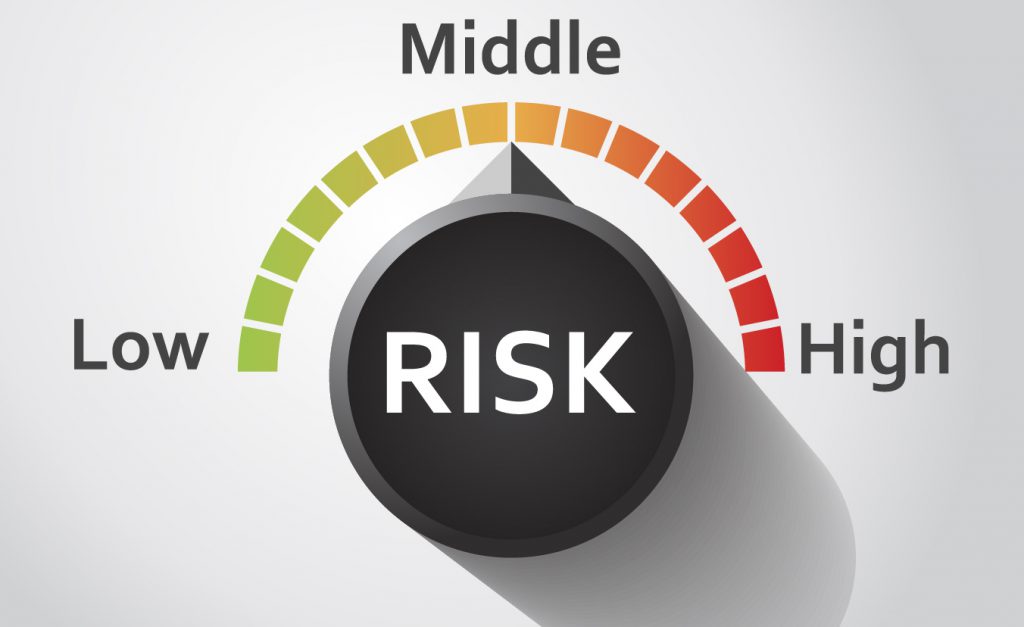One common mistake investors make is to ignore risk while making investment decisions. A large chunk of investors make investment purely based on the returns characteristics of the product. For this reason, we see huge inflows in high risk funds during a bull run, as returns numbers are high. Subsequently, when markets falter, many investors panic and stop investing, or even withdraw their money at a loss.
This usually happens because people don’t understand how much risk they can take. It is the nature of markets to go up and down. If investors understood how much volatility they can withstand, we wouldn’t see such knee-jerk reactions to market movements. So here are a few points which will help you understand how much risk you should take.

Time frame
The first factor you should consider is how far your goals are. This plays the most important role in determining the quantum of risk suitable to your portfolio. Shorter term goals require you to not expose your portfolio to short term volatility. If you need money for a particular goal after a year, you can’t rely on equities as equity might well give negative returns in one year period.
Similarly, longer term goals would entail taking higher risk. Higher risk instrument like equities deliver superior return over a longer time frame even if they falter in the short run. This helps you reach your goal comfortably. Avoiding risk for longer term goals would often leave you with an insufficient corpus since you compromise growth for safety.
Sources of income and commitments
How you earn your money influences how much risk you should take with your investments.
If you have stable monthly inflows of salary, you are not at risk of running out of money the next month and so can take more risk with your investments. However, if your income source is unstable, then you need to keep more of your money in safer instruments. Since your income is volatile, at least some part of your investments should be readily available for your needs and hence cannot be exposed to risks. This will give you peace of mind as well as safety in case of financial emergencies.
Higher number of earning members in your family makes your income more stable. Hence your risk taking ability will be higher. In case one member loses their job, the other will be there to offer financial support. Higher income also means higher savings and a bigger corpus to back you.
Further, the number of people financially dependent on you also influences your risk taking ability. If you are the only person using your money, you may be able to get by on a smaller income even if you suffer a loss of income. However, if you have a family to take care of, you will not have that flexibility. Therefore your risk taking ability is lowered.
Also, when you have high near-term commitments, then you need to buffer for any loss of job and yet keep the commitments. For example, a large home loan EMI is a classic example of someone who loses their job and is not able to pay the loan because his/her savings are locked in high-risk instruments. In such cases, some amount in liquid, low risk instruments is a must.
Essentially in most of the above cases, your saving capacity largely determines the level of risk you can take. A high saving capacity allows you to keep some money aside for emergencies and save for the long term while this is not possible if you save very little. In such a case, you either keep it for emergencies or save for long term and lock it out.
Existing investment corpus
Your existing savings also play a part in determining your capacity to ride through volatility.
If you have built up a sizeable corpus after having earned for a few years, you can afford to take a greater amount of risk. In case of excessive volatility, any money saved up for non-essential goals can be moved to essential goals to make up for the loss. However, if your corpus is small, covering only the most essential goals, then you should opt for a more stable portfolio mix.
Therefore, the risk you should take also depends on the nature of the goal itself. If you are saving for financial goals essential for your life, you should take relatively less risk. However, if you are saving for that Europe trip with your family, you can afford to take slightly more risk. In the worst case, you may have to delay the trip by a year.
Your comfort with risk
Finally, you should also consider how comfortable you are with volatility in the value of your investments. Don’t just look at the current return number of a fund and invest if it is high. Also look at how much it can fall when the market is not doing well. Funds which give very high returns during bull runs, also tend to fall a lot during bear phases. So invest in funds where you are comfortable with the possible downsides.
Understanding when you need to achieve a goal, the nature of the goal and whether it is negotiable and having sufficient savings capability are key factors in deciding how much risk you can take.







